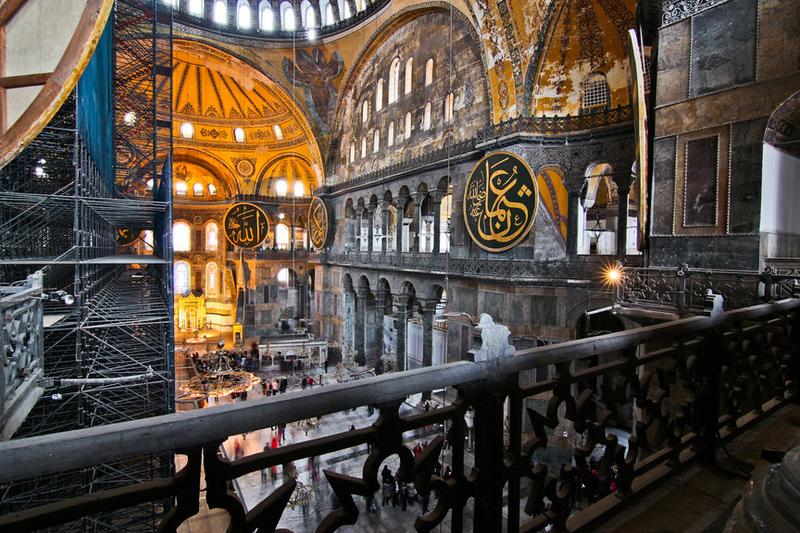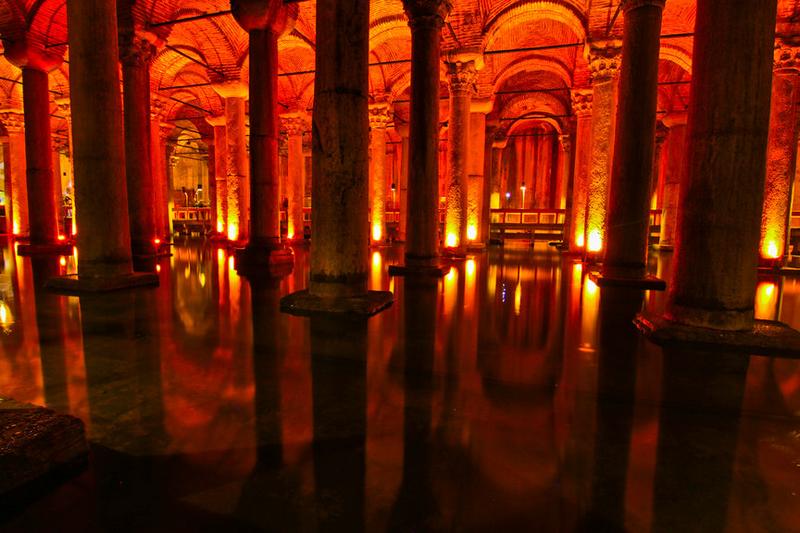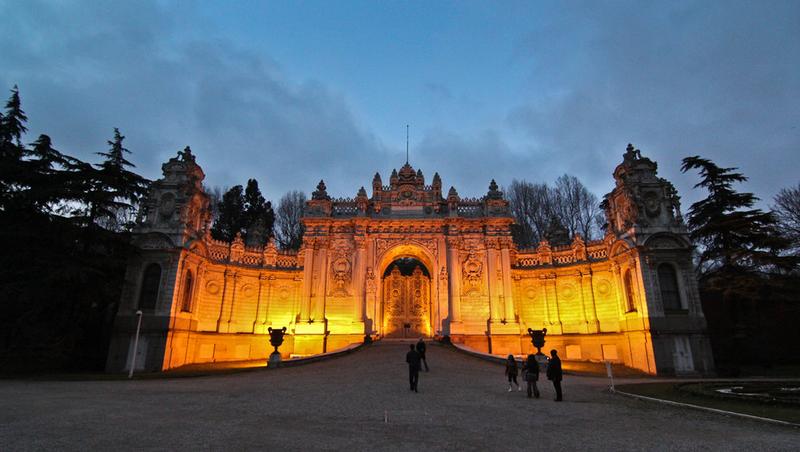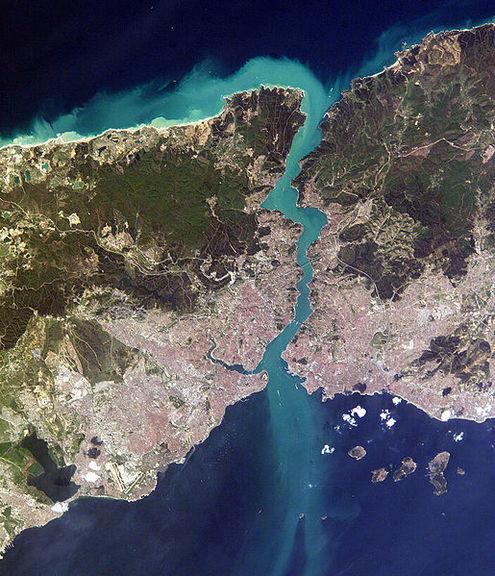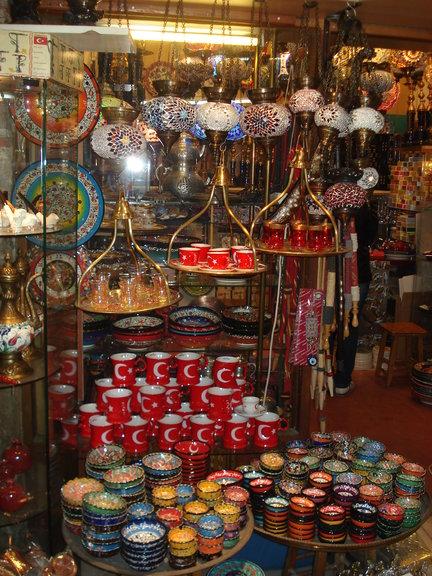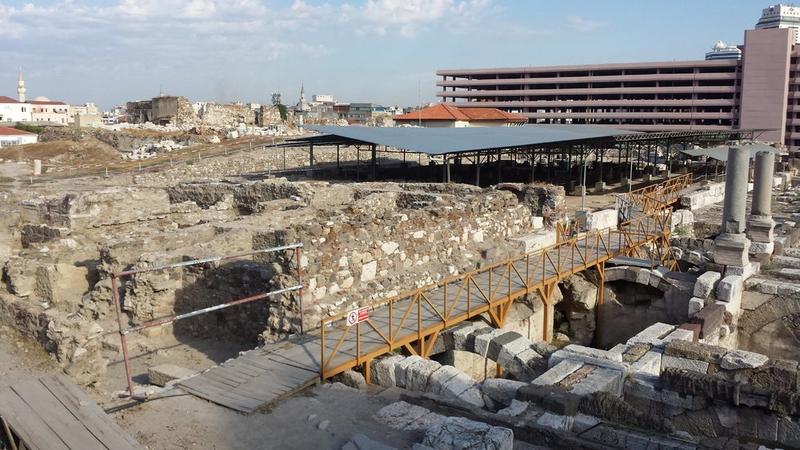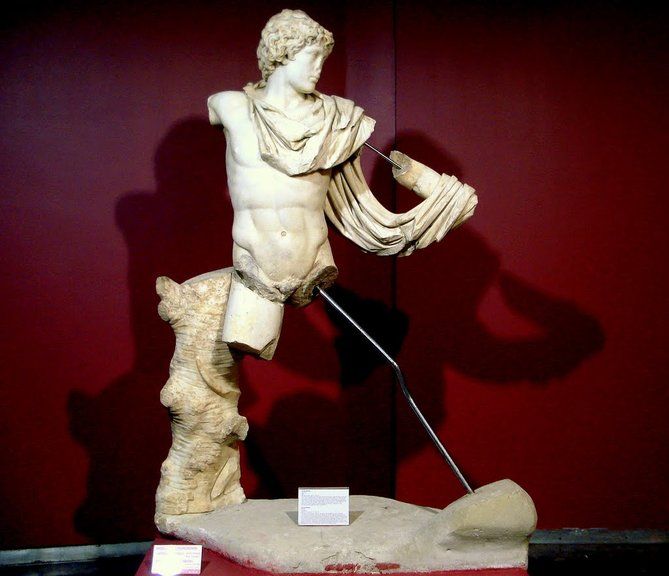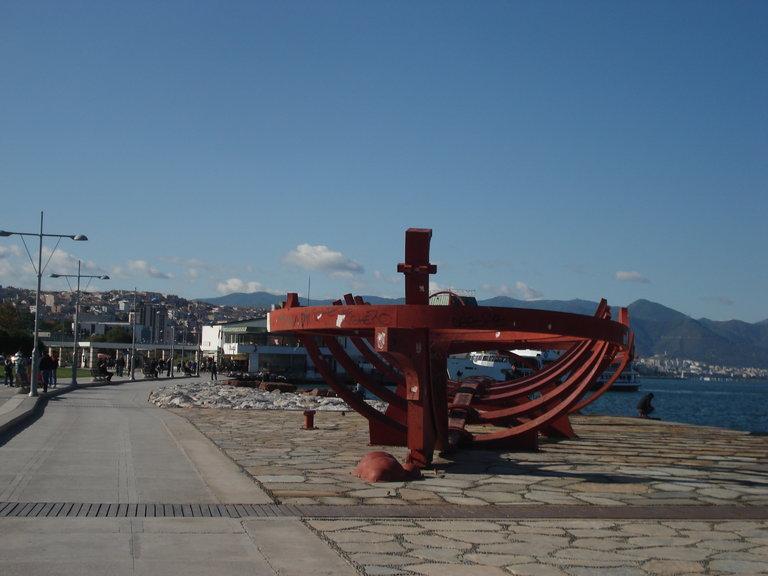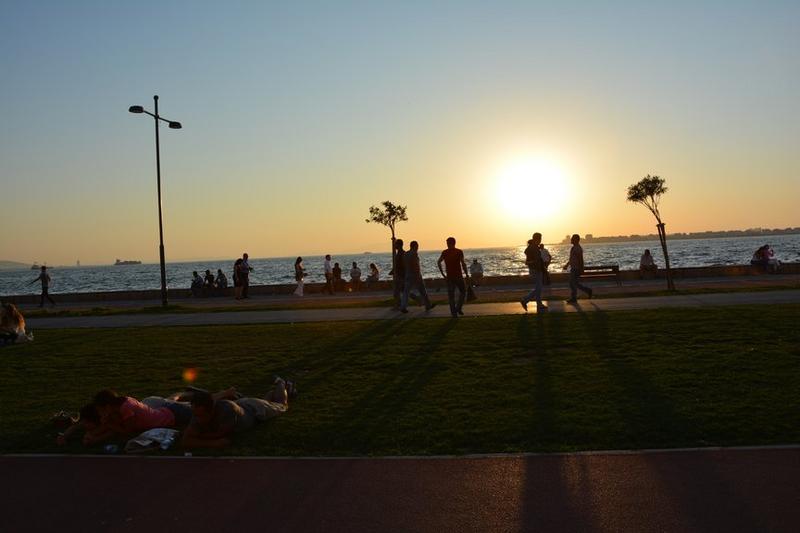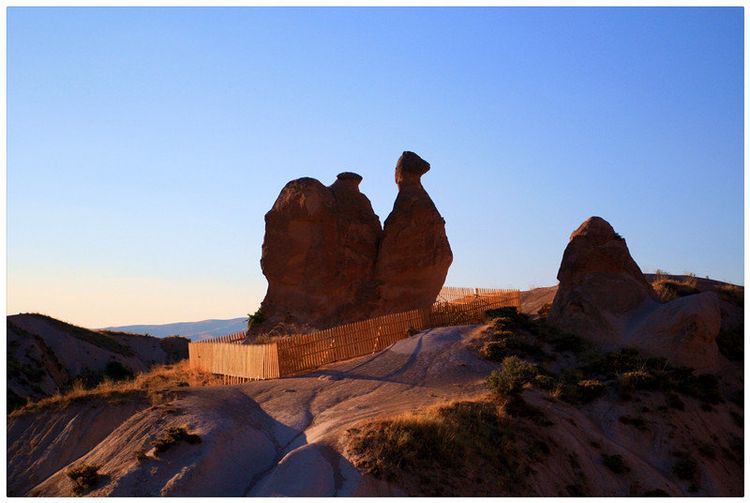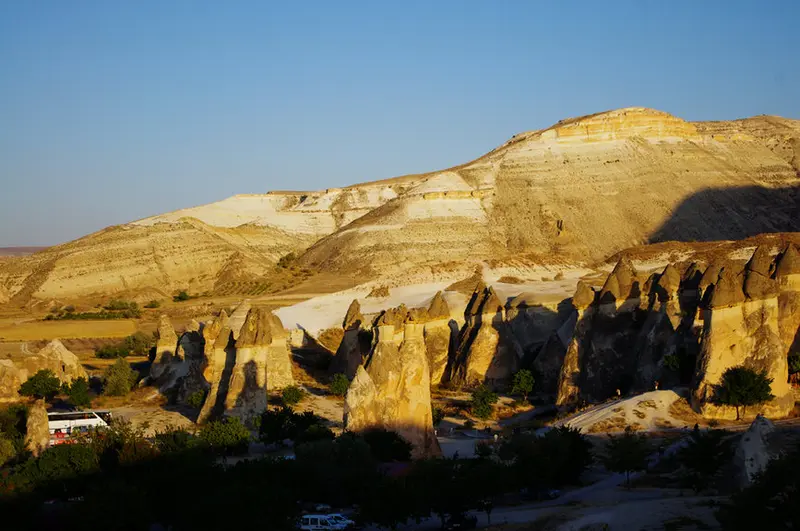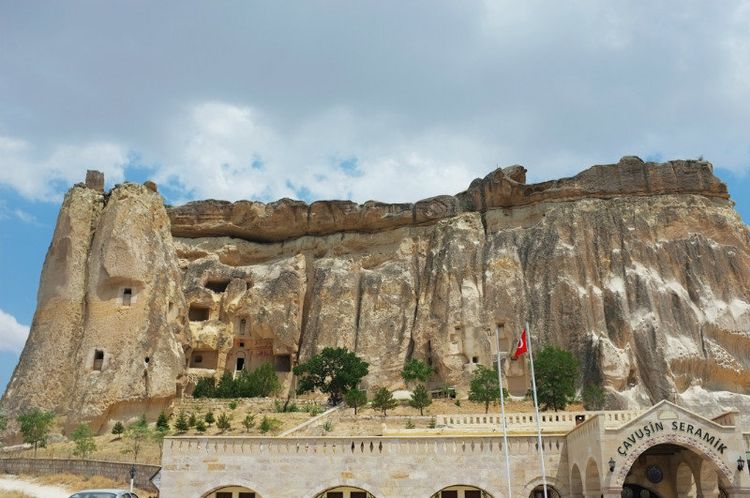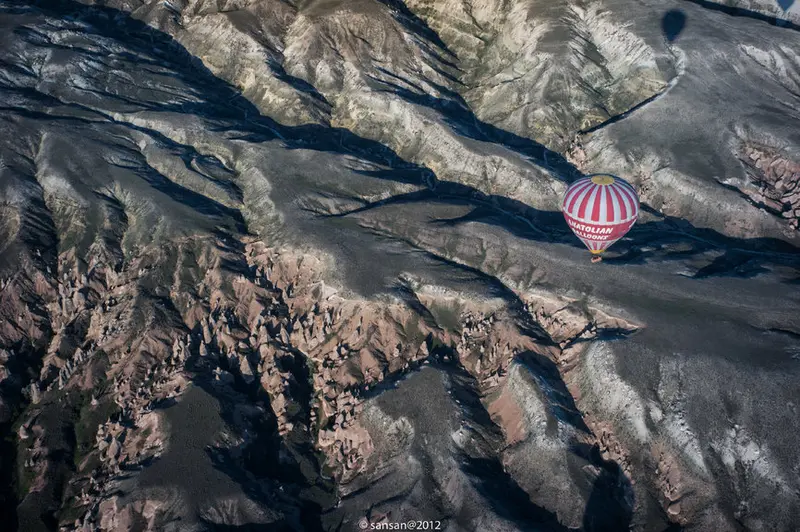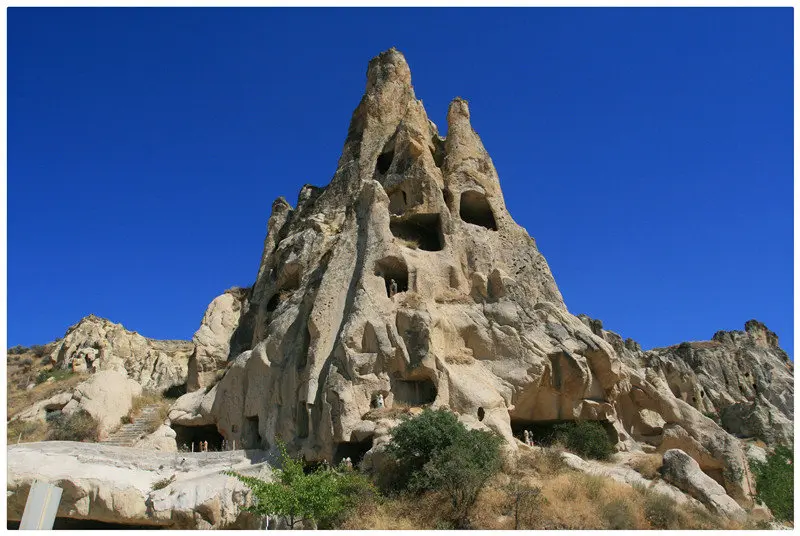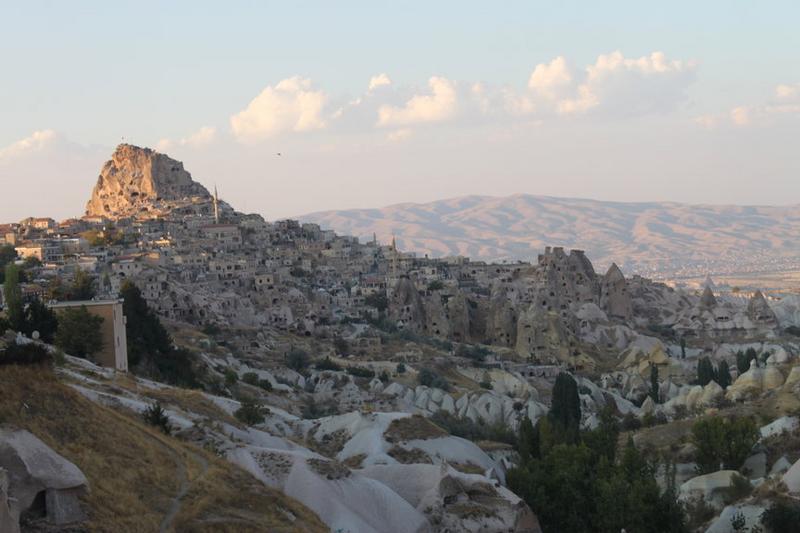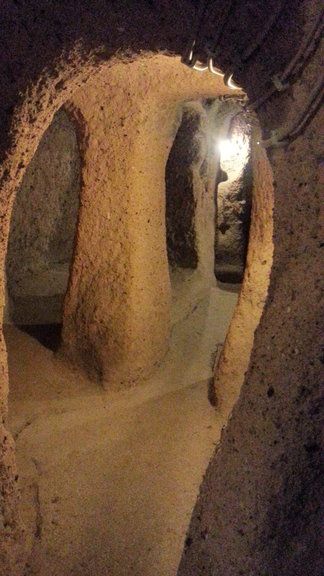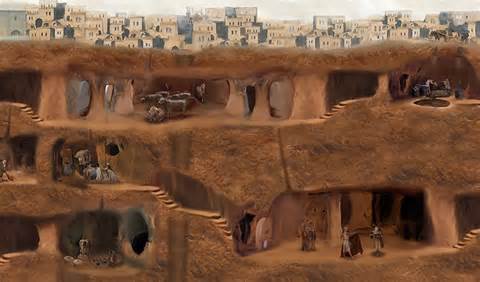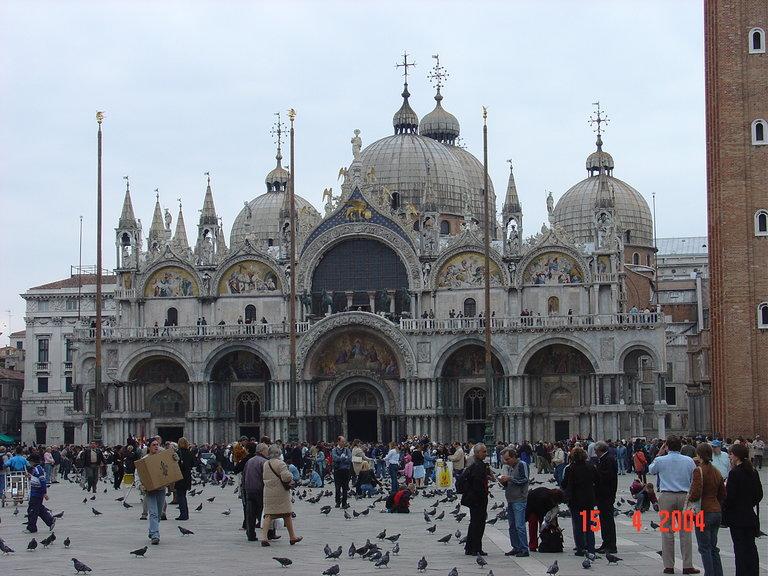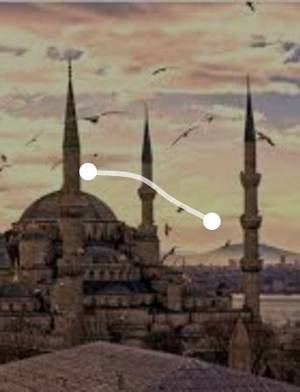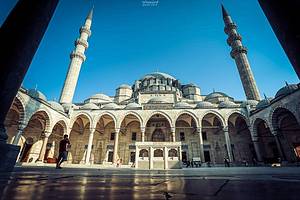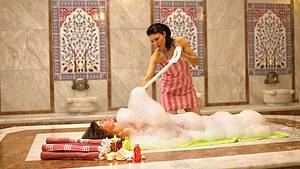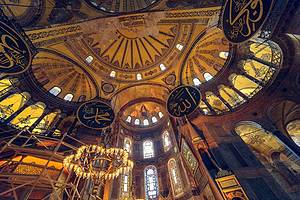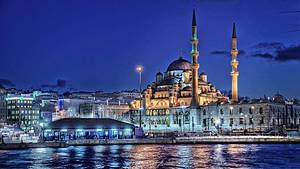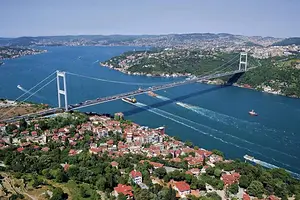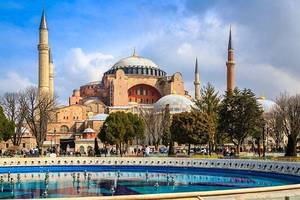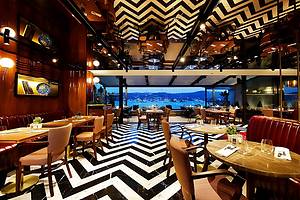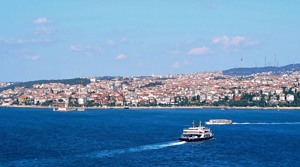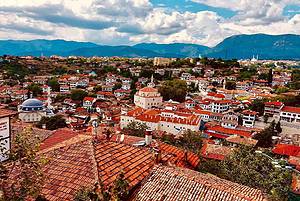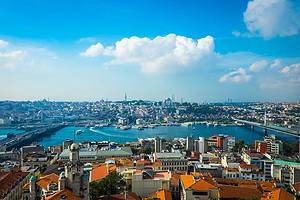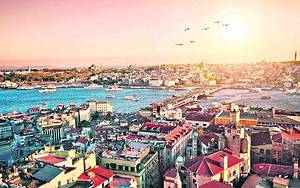A love at first sight: 8-day self-driving tour in 3 cities in Turkey
3 cities |
27 attraction(s) |
total distance 245
km
 TIPS
TIPS
Day1
Day2
Day3
Day4
Day5
Day6
Day7
Day8
Day1: Istanbul
4 attraction(s) ·
2 km
2
Hagia Sophia Cathedral is located across from the Blue Mosque. It was originally a Byzantine cathedral until it was occupied by the Turks and converted into a mosque. It is a famous historical building in Turkey, built in 325 AD. It has been damaged and rebuilt multiple times, representing the epitome of Byzantine culture. The mosaics inside the cathedral depict the history of the time and showcase the beauty of Byzantine art.
Hagia Sophia Cathedral, built by Emperor Constantine in 325 AD to honor the goddess of wisdom, Sophia, was damaged during wars and rebuilt by Emperor Justinian I in 537 AD. It served as a Christian church for 916 years and then was converted into a mosque for 481 years. Since 1935, it has been open to the public as a museum, attracting thousands of visitors every year. Inside the Hagia Sophia Museum, there are the tombs of Sultan Selim II, Sultan Mehmed III, Sultan Murad III, and some of their relatives, as well as the fountain of Mehmed I, a primary school, a soup kitchen, a library, the conference room of Sultan Abdul Mejid, and the room where the star scholar of the mosque lived. These artifacts, especially the interior decoration of the tombs, pottery, and architecture, are masterpieces of the Ottoman period.
1
km
3
The Underground Basilica is an underground building located next to the Hagia Sophia Cathedral. Its history dates back to the 6th century and was originally built by Byzantine Emperor Justinian as a water reservoir for the nearby palace and buildings. It was later closed, and not rediscovered until the 16th century after the conquest of Constantinople by Muhammad. This 140-meter long and 70-meter wide underground cistern can hold 100,000 tons of water. In addition to being an ancient reservoir, it was also used as a military arsenal. Today, it is considered one of the most romantic and mysterious attractions in Istanbul. It features a huge palace constructed with 336 massive columns, each adorned with exquisite carvings. The constant dripping sounds and the eerie legends make you feel like stepping into another enigmatic world.
The Underground Basilica is a masterpiece of construction during the Byzantine Empire, and it's a pleasant place to escape the hot summer sun in Turkey. However, the basilica is relatively small, measuring 65 meters wide and 143 meters long. It can be explored within a short amount of time.
The process of finding the entrance to the Underground Basilica is also quite interesting. According to the map, its entrance is located in a corner of the central garden, just a stone's throw away from the main road of the Hagia Sophia Cathedral.
2
km
4
The Yeni Cami, also known as the Istanbul New Mosque, began construction in 1597 and faced many challenges along the way, including delays and interruptions. It was finally completed in 1663. The design of the mosque was inspired by the Blue Mosque and the Süleymaniye Mosque. It features a large courtyard, towering minarets on the sides, a beautiful fountain in the central courtyard, a series of semi-domes surrounding the main dome, and a spacious interior with golden leaves, carved marble, and colorful Iznik tiles, making the mosque exceptionally splendid. Outside the mosque, there is often a large gathering of pigeons, as if they are reluctant to leave this unique Yeni Cami. This mosque represents the pinnacle of Ottoman architecture and is worthy of careful exploration.
Day2: Istanbul
5 attraction(s) ·
185 km
1
If the most beautiful landmark in the old city is the Blue Mosque, then the Galata Tower is undoubtedly the landmark of the new city. The Galata Tower has stood here since the 6th century AD. However, it was burned down during the Crusades in the 13th century and was not rebuilt until the 14th century by the Genoese. This ancient tower, which has undergone vicissitudes, has also served multiple purposes: a watchtower, a prison, an observatory... Today, people enjoy the panoramic view of the entire city from the top of the 67-meter-high tower.
3
km
2
This is the main street in the city center on the north bank of the Golden Horn in Istanbul. Its importance was established in the 19th century when the area, known as Beyoğlu, was called Pera, and the street was known as Pera Avenue. This area was historically home to Christians in Istanbul, including Greeks, Armenians, European expatriates, and foreign embassies, and played a significant role in the city's political, economic, and cultural life as well as throughout the Ottoman Empire. Many famous buildings and institutions in Istanbul are still located on both sides of this street, including various churches, foreign consulates, and renowned hotels. In recent years, the Istanbul government has revitalized this area, restoring its status as an important commercial street and making it the city's largest pedestrian street, attracting a large number of shopping malls, bookstores, restaurants, entertainment facilities, and both locals and foreign tourists. In the evening, there are also many bars, making it a popular socializing spot for young people.
2
km
3
Taksim Square is a major transportation hub. It is the endpoint of Istiklal Avenue, a long pedestrian shopping street. Nostalgic trams run from the square along the avenue, ending near Tunel (the second oldest subway line in the world, after the London Underground, opened in 1875). Taksim Square is surrounded by many travel agencies, hotels, restaurants, pubs, and international fast-food chains such as Pizza Hut, McDonald's, and Burger King. Some of Istanbul's luxury hotels, including InterContinental, Ritz-Carlton, and Marmara Hotel, are concentrated in Taksim Square.
Taksim Square is the largest square in Istanbul. It is considered a sacred place for Turkish fans, where they have cried and laughed. Taksim Square serves as a symbol of the connection between Turkish people, sports, and the Olympics. Whenever the Turkish national team competes, thousands of fans gather in Taksim Square to celebrate the spirit of the football players' courageous efforts.
Taksim Square is located on Beyoğlu Road in the center of Istanbul. This historic city square has witnessed numerous significant events and exciting moments, undoubtedly becoming the cultural center of the city. Standing to the south of the square is the circular Independence Monument, erected to commemorate the founder of the Republic, Mustafa Kemal Atatürk, who is greatly revered by the Turkish people. Lifelike bronze reliefs showcase the charisma of the founding father to the world. On major holidays, many Turks send wreaths to the monument. The spacious open area to the north of Taksim Square was once a large reservoir. The tall, deep brown building adjacent to the square is the Atatürk Cultural Center. To the west of the square is Taksim Park, which used to be a large artillery barracks during the Ottoman Empire. Crossing Republic Avenue leads to the parade ground of the barracks. This wide space has been preserved since World War II. In recent years, star hotels and high-rise buildings have emerged here.
On the evening of April 3, 2008, as the lights came on, Taksim Square welcomed the Olympic flame for the Beijing Olympics and hosted grand celebratory events. The Atatürk Cultural Center (Atatürk Kültür Merkezi), a multifunctional cultural center and opera house, is also located in Taksim Square.
Taksim Square is an important hub for public transportation in Istanbul. In addition to being a major interchange for the bus system, Taksim Square is also the terminus of the Levent-Taksim subway line. The nostalgic tram line from Istiklal Avenue to Tünel starts from Taksim Square.
On June 29, 2006, a cable car line connecting Taksim Metro Station to Kabataş tram station and the harbor was opened, allowing a short 110-second ascent to Taksim.
2
km
4
Dolmabahçe Palace is located on the European side of the Bosphorus Strait, spanning over 600 meters. It was built between 1843 and 1856 and is known as the New Palace. The palace is a blend of Baroque and Neoclassical architectural styles and is famous for its opulence, including the world's largest crystal chandelier weighing 4,500 kilograms. It served as the main administrative center of the Ottoman Empire from 1856 to 1889 and 1909 to 1922. The construction cost 5 million Ottoman gold pounds, equivalent to 35 tons of gold, with 14 tons of gold used to decorate the palace's ceiling with gold leaf. The palace is a fusion of European court style, similar to the Louvre and Buckingham Palace, combined with Turkish architectural elements, known as "Ottoman Revival." It covers an area of 250,000 square meters and consists of three sections: Selamlik, the central hall, and the harem. The palace features 285 rooms and 6 Turkish baths. It was the residence of the last six Ottoman Sultans and witnessed the establishment of the Republic of Turkey. Atatürk, the founder of the Turkish Republic, lived here until his death in 1938.
179
km
5
Bosphorus Strait (also known as Istanbul Strait) is the boundary between Europe and Asia. It is about 30 kilometers long, with a maximum width of about 3,700 meters and a minimum width of about 700 meters. It connects the Black Sea to the north and the Sea of Marmara to the south. In the center of the strait, there is a strong current that flows from the Black Sea to the Sea of Marmara, and beneath the surface, there is a counterflow that brings saltwater from the Sea of Marmara to the Black Sea. Due to the seasonal migration of fish through the strait, the fishing industry is prosperous. The shores of the strait are covered with lush trees, and there are villages, tourist attractions, magnificent residences, and villas scattered along it. Istanbul, the largest city in Turkey, is located across the Bosphorus Strait from the Anatolian Peninsula, serving as the gateway to the Black Sea for countries along its coast. The strait is the only passage connecting the Black Sea and the Mediterranean Sea.
Day3: Izmir
3 attraction(s) ·
5 km
1
Kizlaragasi Hani Bazaar is a historical market, originally built as an Ottoman Turkish inn in 1744. It is one of the few remaining Ottoman buildings that combines a courtyard and market. Historically serving as a hotel for Silk Road traders, it is now a bustling market. The bazaar offers a wide range of Turkish specialty goods, from carpets and silver jewelry to woolen scarves and handmade ornaments. The ancient courtyard is also a great place for visitors to enjoy tea and rest.
2
km
2
The Agora
The Agora, built for Alexander the Great, was destroyed in an earthquake in 178 AD but later rebuilt. The Corinthian columns and renovated arches give you a glimpse of what the Roman era looked like.
4
km
3
The Archaeological Museum of Izmir houses a selection of Greek and Roman artifacts, including elaborately decorated sarcophagi, a large head of the Roman emperor Domitian, and impressive friezes. The museum exhibits include archaeological artworks from ancient cities such as Iasos, Çandarlı (Pitane), Bergama, and Bayraklı (Former İzmir). There are also ceramic objects made from burnt clay discovered in the archaeological excavations of the prehistoric city of Iasos dating back to 3000 BC, as well as Anatolian pottery from the Protogeometric and Geometric periods, Anatolian vases with black-red figure designs from the Archaic period, Hellenistic water jugs, and various containers, glass vases, bottles, masks, sculptures, and statues of the goddess Aphrodite from Myrina (Aliağa).
Day4: Izmir
3 attraction(s) ·
6 km
1
Izmir Museum of History and Art consists of three separate sections, namely sculptures, pottery, and precious handicrafts, which are a good summary of the local regional cultural traditions.
3
km
2
Küçük Kordon Square is located by the Aegean Sea and is an important central square in Izmir. The central Küçük Kordon Clock Tower on the square was built in 1901 and is a significant landmark of the city. Other buildings surrounding the square include the Izmir Municipality and Küçük Kordon Mosque.
4
km
3
This is one of the liveliest and most beautiful coastlines in Izmir, the nightlife and fashion center of the city. There are countless bars and cafés along the coast, with a stretch of grassy lawn by the seaside. Locals love to sit on the lawn in the evening, enjoying drinks, chatting, and feeling the breeze. At night, you can have a distant view of the splendid lights of Izmir highland.
Day5: Goreme
5 attraction(s) ·
14 km
1
The most obvious valley in this erosional landform is the most peculiar and concentrated volcanic cone group in the Cappadocia region.
The famous camel-shaped rocks, known as "Animal Rock Formations," are found here. Hundreds of closely arranged cones, ranging in height from tens of meters to over 100 meters, gather together as if posing for a group photo. People are amazed by this magnificent spectacle, metaphorically calling it "Fairy Chimney." The unique rock layers in the area are responsible for the formation of the chimneys. A thin and hard layer of basalt on the surface protects the underlying soft and white tuff from erosion, and over time, it has formed today's shape. The cones are weathered from top to bottom, but they look like a piece of stone forest, piercing the sky.
7
km
2
In the vicinity of Göreme, there are the most beautiful and lovely fairy chimneys in the entire Cappadocia region. Besides having the tallest fairy chimneys in Cappadocia, the basalt fairy chimneys here are all multi-headed and pointed, which is very unique. Underneath the towering fairy heads are churches, which were originally the hermitage of St. Simeon in the 5th century and are still very well preserved.
3
km
3
4
km
4
The name Rose Valley vividly describes the appearance of the valley from a distance. Water, floods, and frost have caused these rocks to crack, with the softer parts being eroded away, resulting in a peculiar moon-like landscape. It consists of conical, pyramid-shaped, and turret-shaped rock formations called "fairy chimneys." The layers of mountains are rugged, with bizarre rocks, and the wind whips up dust, evoking a sense of "heroes rise and fall like passing rivers."
2
km
5
The village is centered around a cluster of Roman castle buildings, surrounded by natural volcanic rock and fairy chimney formations. It is one of the oldest villages in the Cappadocia region. Some cave hotels are situated on these volcanic rock hills, providing a breathtaking view of the Roman castle in the village of Goreme, showcasing the marvels of nature.
Day6: Goreme
1 attraction(s) ·
0 km
1
If you can only visit one attraction in Cappadocia, it must be the Goreme Open Air Museum. It is a UNESCO World Heritage site in Turkey, consisting of a complex of rock-cut churches, chapels, and monasteries built on the natural landscape. The open-air museum is located in a steep valley and showcases the natural, historical, and cultural aspects of Cappadocia, with over thirty different-sized rock-cut churches. These churches were originally built by Christians who fled political persecution and settled in Cappadocia. To avoid detection, they carved the mountains to create hidden churches adorned with colorful frescoes, which are truly magnificent. Some of the well-known churches include the Apple (Elmali) Church, St. Barbara Church, Snake (Yilanli) Church, Dark Church (Karanlik kilise), Buckle (Tokali) Church, El Nazar Church, Sandals (Carikli) Church, and Hidden (Sakli) Church, among others.
Day7: Goreme
3 attraction(s) ·
32 km
1
Pigeon Valley is a small scenic spot near the Fairy Chimneys, with tree branches adorned with Turkish lanterns and legendary evil eyes.
22
km
2
Kaymakli Underground City is a place where Christians in the Cappadocia region hid to escape persecution. It has about eight levels of underground caves, but only five levels are currently open to the public. The sheer size of the space is awe-inspiring and it is the largest underground cave site discovered so far. It is recommended to visit in the early morning of July and August or during lunchtime of a tour group to avoid crowds.
11
km
3
Turkey has always been a contested land, whether it was the Romans expanding eastward or the Persians pushing westward, battles were fiercely fought on this plain. The local residents, burdened by the hardships of war, devised a method of digging caves in soft rocks to create shelters during times of conflict.
The city was initially built in the 7th century and is the deepest underground city in Cappadocia, with a depth of over 40 meters below the surface. It consists of approximately 18-20 levels, but only 8 levels are currently open to visitors. The underground city has over 1,200 rooms, including living quarters, chapels, schools, wineries, warehouses, and tombs, providing facilities for various purposes. It can accommodate around 15,000 people. The underground city is also connected to tunnels and other underground cities. One known tunnel is 10 kilometers long, connecting the Derinkuyu Underground City to its sister city of Kaymakli.
Day8: Istanbul
3 attraction(s) ·
5 km
1
The Blue Mosque, also known as Sultan Ahmed Mosque, is a landmark building in Istanbul. It was built during the Ottoman Empire and is known for its grandeur and unique design, with its interior walls covered in blue ceramic tiles. Construction of the mosque began in 1609 and was completed in 1616.
3
km
2
The Blue Mosque is adjacent to Sultan Ahmet Square.
In 203 AD, Emperor Septimius Severus rebuilt the city, expanded the city walls, and built a hippodrome for chariot races and other entertainment events.
In 324 AD, Emperor Constantine the Great decided to move the capital from Rome to Byzantium and renamed the city New Rome, which was soon renamed Constantinople. Emperor Constantine the Great extensively expanded the city, and one of the important projects was the restoration of the hippodrome. The racetrack was U-shaped, estimated to be about 450 meters long and 130 meters wide, capable of accommodating 100,000 spectators. Throughout the Byzantine period, the hippodrome was the center of urban social life.
The Serpent Column: The Serpent Column was originally the Prataean tripod altar of the Temple of Apollo in Delphi. The altar was built in the 5th century BC to celebrate the victory of the Greeks over the Persians in the Battle of Plataea during the Persian Wars. Its top was a golden bowl supported by three snake heads. Emperor Constantine the Great ordered it to be moved from Delphi to the middle of the Constantinople Hippodrome. During the Fourth Crusade, the golden bowl was damaged or stolen. As for the snake heads, they were not destroyed until the late 17th century. In the first few centuries after the Ottoman conquest, they still existed, as many Ottoman paintings depicted these snake heads. Some of the snake heads have been restored and are displayed in the Istanbul Archaeological Museum. Today, only the lower part of the Delphi tripod altar, known as the "Serpent Column," remains.
The Theodosius Obelisk, also known as the "Obelisk of Theodosius": Emperor Theodosius the Great purchased a pink granite obelisk from Egypt in 390 AD, which was erected inside the racetrack. This obelisk was originally built by the ancient Egyptian pharaoh Thutmose III (1479-1425 BC) to commemorate his victory and originally stood in front of the Karnak Temple gate in Luxor, Egypt. Emperor Theodosius the Great cut it into three pieces, transported them back to Constantinople, and added a marble base. The segment seen today is the top part of the obelisk. This obelisk has been around for nearly 3500 years and is still well-preserved.
The Column of Constantine, also known as the Wall Column: Built by Emperor Constantine VII Porphyrogennetos in the 10th century to commemorate his grandfather, Basil I, it is the only stone column built by the locals themselves. The column is 32 meters tall and originally adorned with gilded bronze reliefs depicting the victories of Basil I, the grandfather of Constantine VII. At the top of this column, there is a globe.
In the 13th century, during the Fourth Crusade, when Latin armies invaded Constantinople, it was looted and melted down. The stone core of this memorial monument survived and is called the Wall Column. Due to the preference of the young Turkish new army to climb this column to show their strength, the surface of the column was further damaged. In the earthquake of 1894, the Column of Constantine suffered significant damage and was subsequently reconstructed by the Turkish government.
2
km

